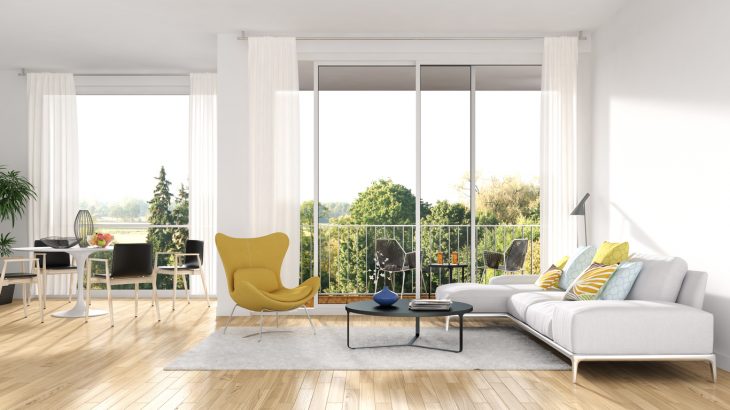Crafting realistic and captivating worlds through expert-level 3D design requires a unique blend of technical skills, artistic vision, and a deep understanding of the physical and emotional dynamics that make a world come alive. With advancements in technology, 3D design has become a critical tool in industries ranging from video games and film to virtual reality and architectural visualization. The ability to create lifelike environments or fantastical realms hinges on mastery over various aspects, including modeling, texturing, lighting, and rendering. At the core of expert-level 3D design lies the ability to build highly detailed and accurate 3D models. This is the foundation of any virtual world, as it determines the spatial relationship of objects, structures, and landscapes. An effective 3D model is more than just a geometric representation; it tells a story, conveys emotions, and provides the necessary visual context for the narrative or purpose. Creating these models requires a deep understanding of anatomy, architecture, and the laws of physics.

For example, a realistic tree must consider not only its shape but also how light and shadow play across its leaves or bark, how the wind moves its branches, and how it interacts with its surroundings. Once the modeling is complete, the next step is texturing. The textures applied to 3D dizajn models add a layer of realism by simulating the surface qualities of objects. These can range from the smooth sheen of glass to the rough, weathered surface of stone. Advanced texturing techniques often include bump maps, normal maps, and displacement maps, which add depth and detail without requiring additional geometry. This process requires a keen eye for detail and an understanding of how different materials interact with light. For example, the way a wet stone looks under moonlight will differ greatly from a dry one under midday sun. A skilled designer can make these distinctions through subtle textural variations; creating a world that feels not only real but lived-in. Lighting is another essential aspect of creating captivating worlds. The way light interacts with the environment sets the mood and tone of the scene.
Lighting can evoke feelings of warmth, isolation, mystery, or tension, all of which contribute to the narrative or the overall experience. Mastery over lighting techniques such as global illumination, reflections, and shadows is crucial to making a world feel immersive and believable. The interplay of light and shadow in a forest or the reflections on the surface of a water body can dramatically transform a simple scene into a captivating masterpiece. Lastly, rendering brings everything together, transforming the 3D scene into a final visual output. Rendering involves calculating how the light, materials, and models interact within the scene and producing a 2D image or animation that looks realistic or artistically compelling. It involves much more than just building models and applying textures; it is about creating a fully realized world that feels authentic and immersive, whether it is a futuristic city, an ancient ruin, or an alien planet. The result is an experience that not only entertains but also engages the viewer emotionally, making them feel like they are truly part of the world that has been brought to life.

 In addition to enhancing the visual appeal of your pool, remodeling can also improve its functionality and efficiency. Advances in pool technology have led to the development of energy-efficient equipment and eco-friendly solutions that can help reduce maintenance costs and minimize environmental impact. By upgrading to energy-efficient pumps, filters, and lighting systems, you can enjoy a more sustainable pool experience while saving money on utility bills. Furthermore, remodeling provides an opportunity to address any structural issues or safety concerns, ensuring that your pool is not only beautiful but also safe and reliable for years to come. Whether you envision a resort-style pool with a luxurious spa and waterfall features or a family-friendly oasis with a shallow wading area and built-in seating, a professional remodeler can tailor the design to suit your needs. By incorporating elements such as fire pits, outdoor kitchens, and cozy seating areas, you can create a cohesive outdoor living space that seamlessly integrates with your pool and enhances the overall enjoyment of your backyard.
In addition to enhancing the visual appeal of your pool, remodeling can also improve its functionality and efficiency. Advances in pool technology have led to the development of energy-efficient equipment and eco-friendly solutions that can help reduce maintenance costs and minimize environmental impact. By upgrading to energy-efficient pumps, filters, and lighting systems, you can enjoy a more sustainable pool experience while saving money on utility bills. Furthermore, remodeling provides an opportunity to address any structural issues or safety concerns, ensuring that your pool is not only beautiful but also safe and reliable for years to come. Whether you envision a resort-style pool with a luxurious spa and waterfall features or a family-friendly oasis with a shallow wading area and built-in seating, a professional remodeler can tailor the design to suit your needs. By incorporating elements such as fire pits, outdoor kitchens, and cozy seating areas, you can create a cohesive outdoor living space that seamlessly integrates with your pool and enhances the overall enjoyment of your backyard.
 In addition to structural restoration, we address the restoration of your personal belongings and cherished items. Our team employs specialized techniques for content cleaning and restoration, working diligently to salvage and restore as many items as possible. We understand the sentimental value of personal belongings, and our goal is to minimize losses and preserve what matters most to you. Our commitment to excellence extends beyond the restoration process. We work closely with insurance providers to streamline the claims process, ensuring a seamless experience for our clients during a challenging time. Our transparent communication and documentation practices provide the necessary evidence to support your insurance claim, facilitating a faster resolution. Moreover, we prioritize environmental sustainability in our restoration efforts. Our use of eco-friendly cleaning agents and responsible waste disposal practices align with our dedication to minimizing our ecological footprint. We believe in not only restoring your property but doing so in a way that contributes to the well-being of our planet.
In addition to structural restoration, we address the restoration of your personal belongings and cherished items. Our team employs specialized techniques for content cleaning and restoration, working diligently to salvage and restore as many items as possible. We understand the sentimental value of personal belongings, and our goal is to minimize losses and preserve what matters most to you. Our commitment to excellence extends beyond the restoration process. We work closely with insurance providers to streamline the claims process, ensuring a seamless experience for our clients during a challenging time. Our transparent communication and documentation practices provide the necessary evidence to support your insurance claim, facilitating a faster resolution. Moreover, we prioritize environmental sustainability in our restoration efforts. Our use of eco-friendly cleaning agents and responsible waste disposal practices align with our dedication to minimizing our ecological footprint. We believe in not only restoring your property but doing so in a way that contributes to the well-being of our planet.
